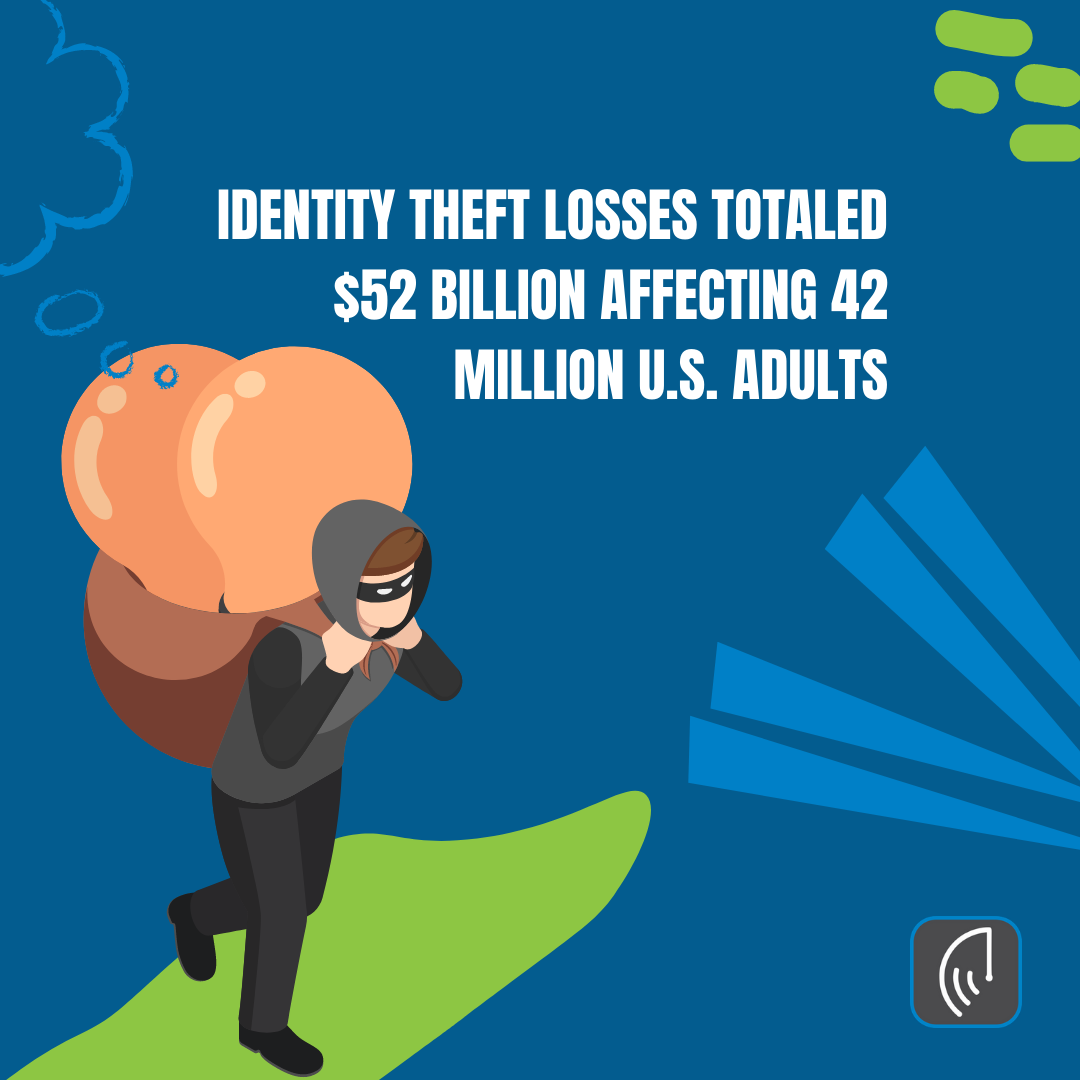The just-released 2022 Javelin Strategy Annual Identity Fraud Study found that identity theft losses totaled $52 billion and affecting 42 million U.S. adults in 2021.
The Javelin study also reported the following:
- 1 in 20 Americans were victims of fraud in 2021.
- The average per-victim loss from traditional identity theft and fraud rose to $1,551.
- The average per-victim loss from identity fraud scams was $1,029.
- More than half (54%) of fraud victims want their financial institution to offer a fraud prevention resource center to help them resolve their identity theft and fraud event.
- Consumers expressed an interest in receiving more fraud prevention education from their financial institutions as well as identity protection services.
- The 2021 statistics show individuals and businesses are unprepared for the tactics criminals are deploying in our modern, digital-first world.
Since identity theft and fraud is constantly evolving, how does the 2022 Javelin Study reflecting 2021 statistics compare to the last two Javelin Studies in 2020 and 2019?
- In 2020, identity theft and fraud losses totaled $56 billion and affected 49 million U.S. adults.
- In 2019, identity theft and fraud losses totaled $16 billion and affected 14.4 million U.S. adults.
According to Javelin, “the trends observed were huge increases to account takeover fraud and new account fraud in which fraud operators deployed multiple tactics to steal victims’ personal information to drain them of billions of dollars” including:
- New account fraud increased by 109% enabling criminals in possession of consumer information to, at times, open multiple unauthorized accounts ranging from merchant accounts to credit cards.
- Account takeover losses increased 90% as criminals highjacked victims’ online lives.
- Fraud affecting existing credit cards rose 69%, while fraud on existing non-card accounts, including checking, savings, insurance or utilities, jumped 73%.
Javelin defines identity fraud as “the unauthorized use of another person’s personal information to achieve illicit financial gain. Identity fraud can range from simply using a stolen payment card account, to making a fraudulent purchase, to taking control of existing accounts or opening new accounts.”
In addition, Javelin defines identity fraud scams as “relatively easy to orchestrate and present an opportunity for criminals to bypass the fraud detection barriers maintained by financial services providers because they directly target the consumer.”
For example, an element of identity fraud scams is that consumers often remember the moment they experienced contact with an ID theft criminal or cyber thief relating to Phishing (fraudulent emails), Vishing (fraudulent phone calls and voice mail messages), and Smishing (fraudulent text messages).
For years, I have written and publicly spoken to consumers and small businesses on how education and awareness will help mitigate a consumer’s exposure to an identity theft event and an organization’s exposure to a data breach incident.
Since identity theft and fraud are constantly evolving, consumers and small businesses need to stay up to date on identity theft and fraud trends, such as the 2022 Javelin study, to make sure their online life and digital identity are safe!
By Mark Pribish Vice President and ID Theft Practice Leader
March 2022
Other recent articles: